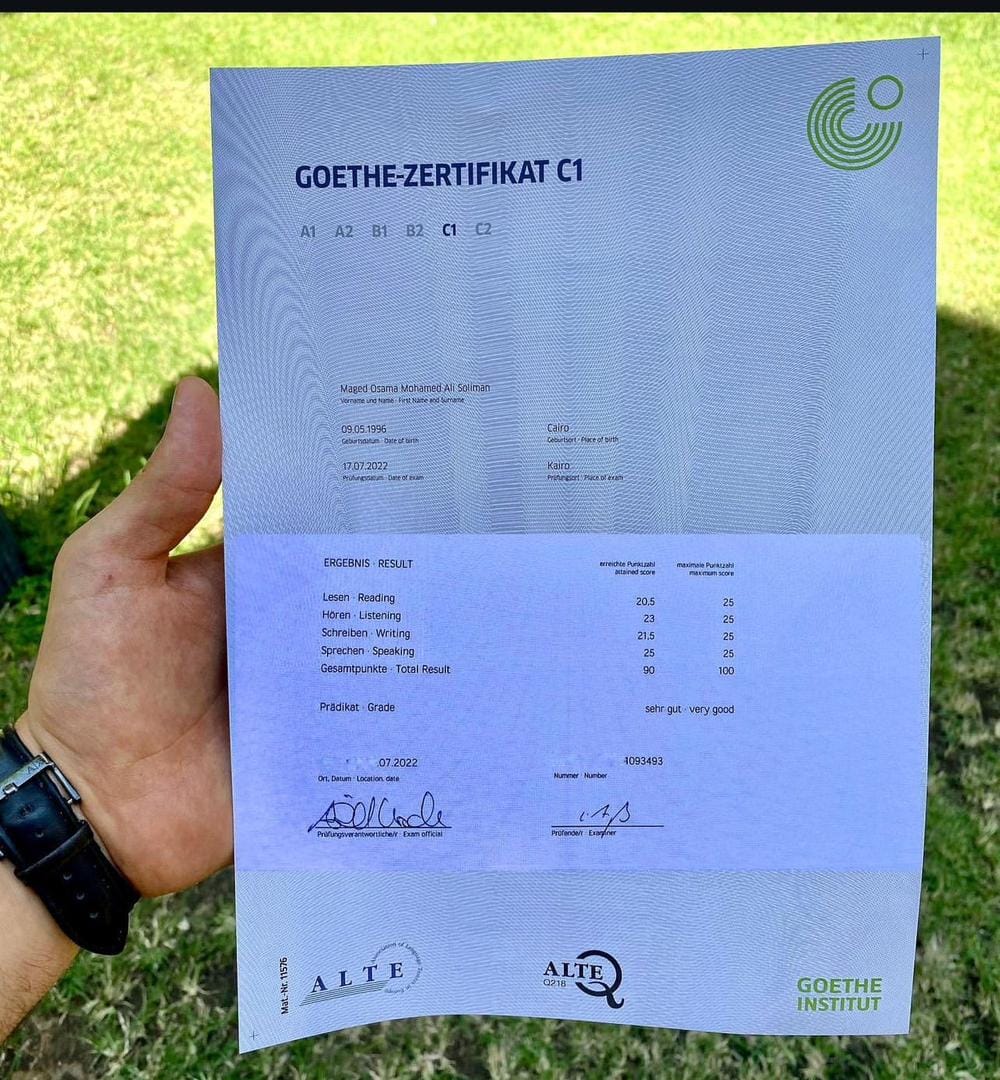This Week's Most Popular Stories Concerning ÖSD Certificate B1

ÖSD Certificate B1: A Gateway to Proficiency in German
As globalization continues to bridge cultural and linguistic divides, the significance of language proficiency, especially in extensively spoken languages like German, can not be ignored. The ÖSD Certificate B1 stands as a recognized credentials that examines and affirms an individual's efficiency in the German language. This blog site post will check out the significance, structure, advantages, and FAQs surrounding the ÖSD B1 Certificate, providing an extensive guide for prospective prospects.
What is the ÖSD Certificate B1?
The ÖSD (Österreichisches Sprachdiplom Deutsch) is an Austrian certificate that determines German language skills for non-native speakers. The B1 level corresponds to the Common European Framework of Reference for Languages (CEFR), which classifies language efficiency into six levels, from A1 (novice) to C2 (skilled). Achieving the B1 certificate indicates that an individual has actually reached an intermediate level of proficiency where they can conveniently communicate in everyday scenarios.
Key Features of the ÖSD B1 Certificate
| Function | Description |
|---|---|
| Level | B1 (Intermediate) |
| Recognition | Accepted in Germany, Austria, Switzerland, and other German-speaking countries. |
| Skills Assessed | Listening, Speaking, Reading, and Writing |
| Validity | Long-lasting, no expiration date |
| Target market | Non-native German speakers, consisting of trainees and experts. |
Structure of the ÖSD B1 Examination
The ÖSD B1 Certificate test consists of 4 parts, each created to assess different language skills:
- Listening Comprehension: This area assesses the capability to understand spoken German, consisting of discussions, statements, and brief talks.
- Reading Comprehension: Candidates will read different texts such as posts, advertisements, and individual correspondence to show their understanding.
- Writing: This part requires prospects to compose written actions, such as letters or short essays, showcasing their capability to communicate in composing successfully.
- Speaking: The speaking test includes communicating with an examiner, where candidates must show their conversational abilities and ability to reveal concepts and opinions.
Exam Format Overview
| Evaluation Part | Duration | Percentage of Final Score |
|---|---|---|
| Listening | Thirty minutes | 25% |
| Reading | 60 minutes | 25% |
| Writing | 60 minutes | 25% |
| Speaking | 15 minutes | 25% |
Benefits of Obtaining the ÖSD B1 Certificate
Accomplishing the ÖSD B1 Certificate is not simply a testimony to language proficiency; it can open doors to different chances. Here are a few of the notable benefits:
- Academic Opportunities: Many German-speaking universities require evidence of language efficiency for admission. The B1 Certificate can satisfy this requirement.
- Profession Advancement: Employers often value language skills, particularly in multilingual environments. Having a B1 Certificate can boost a resume and improve job potential customers.
- Cultural Integration: For those preparing to live in a German-speaking nation, obtaining a B1 Certificate can help with cultural combination, making it possible for better communication and social connections.
- Additional Studies: The ÖSD B1 Certificate allows prospects to progress to advanced levels (B2 and beyond), leading the way for deeper language proficiency.
Preparation Strategies for the ÖSD B1 Examination
Correct preparation is essential to being successful on the ÖSD B1 evaluation. Here are some effective techniques:
- Enroll in a Language Course: Consider signing up with a trusted language school that uses customized courses for ÖSD exam preparation.
- Practice Regularly: Engage in regular listening and speaking workouts. Usage resources like German podcasts, films, and conversation clubs.
- Make Use Of Study Materials: Invest in ÖSD-specific study guides and practice tests to acquaint yourself with the exam format.
- Type a Study Group: Collaborating with peers can enhance inspiration and provide diverse learning perspectives.
- Look for Feedback: Occasionally, arrange mock tests with trainers who can provide constructive feedback on your performance.
Frequently Asked Questions Regarding the ÖSD B1 Certificate
1. The length of time does it require to get ready for the ÖSD B1 Certificate?
Preparation time varies based on the individual's beginning level, however usually ranges from 3 to 6 months with consistent research study.
2. Is the ÖSD B1 Certificate legitimate in all German-speaking countries?
Yes, the ÖSD B1 Certificate is extensively recognized throughout German-speaking nations, consisting of Germany, Austria, and Switzerland.
3. What happens if I do not pass the assessment?
Prospects can retake the assessment. There are no limits on the number of attempts, enabling continued improvement.
4. Are there any age constraints for taking the ÖSD B1 exam?
No, anybody can take the assessment, despite age. It's open to all non-native speakers.
5. What materials are permitted throughout the exam?
Candidates are typically not enabled to utilize any products during the composed parts, but for speaking, individual notes may be allowed.
The ÖSD Certificate B1 acts as a vital stepping stone in mastering the German language. With its comprehensive assessment of language skills, it not just validates efficiency however also enhances cultural integration and opens doors to scholastic and expert opportunities. By utilizing effective research study techniques and making use of offered resources, candidates can with confidence approach the assessment, embracing the journey toward becoming proficient German speakers. Geothe Zertifikat 4 All of getting this certificate extend beyond simple credentials; they lead the way for individual and professional growth in a dynamic, German-speaking world.

